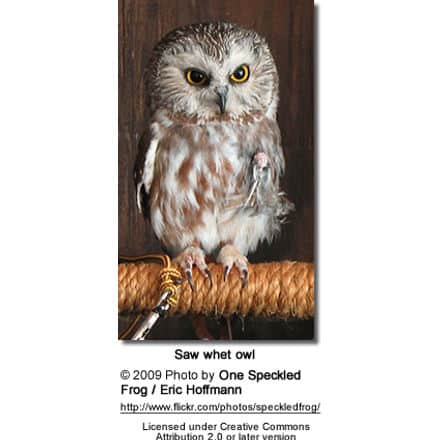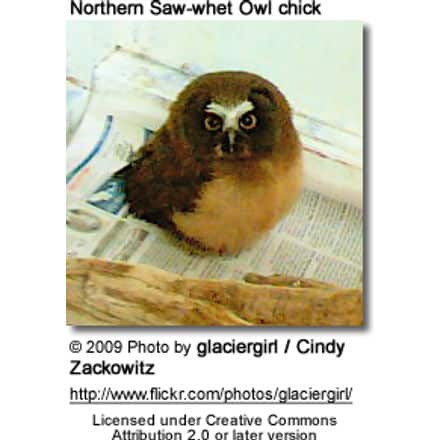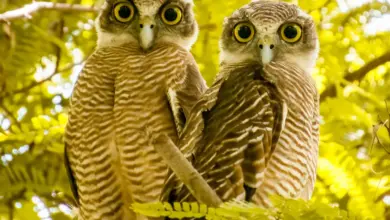Northern Saw-whet Owl (Aegolius acadicus)
The Northern Saw-whet Owl (Aegolius acadicus) is a small owl that is also known as the Acadian Owl, Kirkland’s Owl, white-fronted Owl, Farmland Owl, Little Nightbird, Queen Charlotte Owl, and Whet-saw Owl.
In captivity, they have lived up to eight years. But in their natural habitat, they compete with Boreal Owls, starlings, and squirrels for nesting sites; and are preyed upon by various birds of prey, including larger owls, Cooper’s Hawks, and Northern Goshawks.
Distribution / Range
It breeds across North America; specifically south-eastern Alaska, central British Columbia, south to the mountains of southern California to southern New Mexico. It also occurs in Mexico.
Localized populations exist in western South Dakota and western Minnesota, northern Illinois, southern Michigan, central Ohio, West Virginia, western Maryland, and New York.
Some also breed locally in the mountains of eastern Tennessee and western North Carolina.
Most of them are non-migratory, although some may move south to the central United States or even as south as central Florida.
Young birds are more likely to migrate than adults, and they also tend to go further south,
Even though they are fairly common, they are not easily seen, particularly because they are mainly active at night and also because of their camouflaging plumage.
During the day, they are usually roosting in the foliage, close to the ground.

Description
They are between17 to 21.9cm (6.7-8.6″) long and have a wingspan of 45.9 to 56.3cm (18.1-22.2″). They weigh between 75-110g (2.6-3.9oz). Females tend to be slightly larger than males.
The face is large, round, and light grey with brown streaks, a dark bill, and yellow eyes.
The plumage is pale with dark streaks below and above, and brown with white spots.
As is typical of owls, they have excellent hearing and exceptional vision in low light.
When alarmed, this owl will elongate its body to appear like a tree branch or bump – usually bringing one wing around to the front of the body.
Breeding / Nesting
They typically breed between March and May in coniferous forests, sometimes mixed or deciduous woods.
They nest in tree cavities – many times taking advantage of abandoned woodpecker nests. They may also use nesting boxes.
The clutch size ranges from 3 to 7 eggs, which are incubated by the female alone for about 21 to 28 days. During this time, the male brings food to the nest for her to feed on and also defends the area around the nest site.
The young fledge when they are about 4 to 5 weeks old but are still fed by their parents for several weeks after leaving the nest.

Diet / Feeding
These owls mainly eat small rodents. Along the Pacific coast, they may also take frogs, crustaceans, and aquatic insects.
They also prey on small birds, such as swallows, sparrows, and chickadees.
Calls / Vocalizations
This owl is generally quiet, mostly vocalizing during the breeding season.
The Saw-whet Owl was named for its unique “skiew” call made when alarmed, which resembles the whetting of a saw.
The courtship call – a monotonous, whistled “hoop” – may go on for several hours without a break.
A male flying to the nest with food for the female and the young makes a rapid staccato burst of toots. The female responds with a soft “swEE“.
More Owl Information
- Owl Information
- Index of Owl Species with Pictures
- Owl Eyes / Vision Adaptations
- Pygmy Owls
- Barn Owls
- Horned Owls
- Scops Owls



